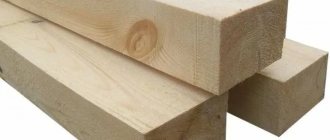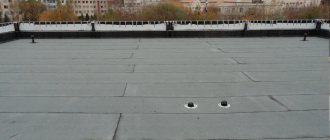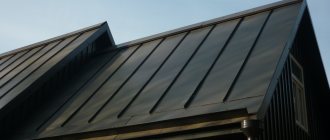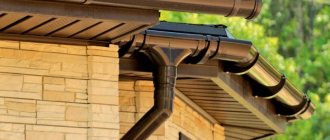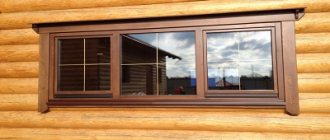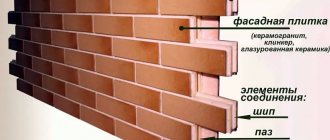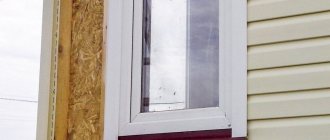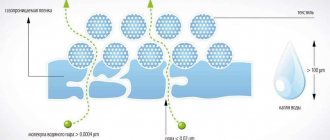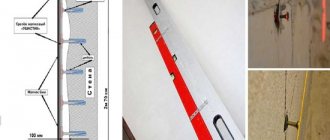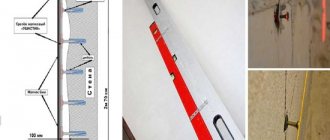Polymer membranes occupy a prominent place in the list of materials for soft roofing. Most often they are used for arranging large-scale flat roofs over industrial, shopping and sports centers. However, even in the private sector, a niche has been conquered, albeit small, but steadily expanding. PVC coatings are in high demand, attracting with impeccable insulation, ease of installation and an abundance of colorful options.
Knowledge of the rules according to which the installation of a soft roof made of PVC membrane is carried out will provide an ideal result in independent work or will help control the actions of hired roofers.
What is membrane roofing
Membrane is a type of film material used for coating. It is about 2 mm thick and consists of polymers. It is considered an excellent option for installing roofing on flat and flat roofs. Less commonly used in the construction of houses with sloping roofs.
Advantages and disadvantages of membrane roofing
These coatings were first used more than 40 years ago. During this time, the products have not lost popularity. It is actively used in European countries, and its popularity is gradually increasing in Russia. This is due to a number of advantages of the material.
Advantages:
- Durability . Service life varies from 20 to 60 years.
- Fire resistance . The composition includes fire-fighting components that prevent the material from igniting.
- Thermal and waterproofing .
Membrane roofing has its advantages Source logicroof.ru
- Light weight . On flat roofs, the load on supporting structures and foundations should be minimal.
- Resistance to external natural factors such as low and high temperatures, precipitation, high humidity, ultraviolet radiation and others.
- Vapor permeability . Moisture vapor appears under the roof and condensation forms. Moisture remaining in the layers of the roof begins to destroy the entire structure. Membrane coating eliminates this outcome and increases the service life of the roof.
- The coating can be used on uneven surfaces .
Disadvantages of membrane coatings:
- High cost compared to other coatings. But this disadvantage is offset by an important advantage - durability.
- Weak resistance to some solvents , oils and bitumen-based substances. This should be taken into account before installation.
- Some products contain volatile substances .
See also: Catalog of companies that specialize in roof repair and design.
Material storage
Taking into account the structure of membrane materials, the following requirements are imposed on its storage:
- the material is stored in packaged rolls, indoors or under a canopy;
- During long-term storage, rolls should be placed in a horizontal position;
- Rolls are stored in one row.
The storage location must be away from heating devices and other heat sources. Avoid exposure to direct sunlight and precipitation. Avoid icing.
Types of roofing membranes
As with other products, there are several types of roofing membranes on the market. They differ from each other in composition and purpose. Therefore, before using a certain type, its characteristics are taken into account.
Membrane coating of a flat roof Source vl-fasad.ru
Classification by material of production
Manufacturers make products based on different polymers. As a result, coatings with distinctive characteristics, properties, advantages and disadvantages appear on the market.
Kinds:
- EPDM . Dense rubber or polymerized elements are used as the basis of the fabric. They increase the strength of the product with a special polyester mesh. Essential fibers are added to the composition to increase the product's resistance to mechanical stress.
The membrane has a number of advantages, including waterproofness, environmental friendliness and resistance to weather conditions. The main disadvantage is that the seams are connected using adhesive, which reduces the strength and reliability of the fabric compared to other types.
- TPO . The most airtight and high temperature resistant material. There are two models. The first type is created without reinforcement. The second has polyester or fiberglass reinforcement. The canvas has the characteristics of plastic and rubber. Has a number of advantages. One of the advantages is the high level of strength. The disadvantage is low elasticity and the need for timely maintenance.
Membrane roofing has high strength, but it needs timely maintenance Source legkovmeste.ru
- PVC . The most common and popular product among polymer coatings. Increase the strength of PVC roofing membranes with ether fiber. They add elasticity and increase resistance to low temperatures by adding plasticizers. This type of product occupies a large part of the market and is produced by many roofing manufacturers.
Classification by purpose of roofing membranes
All roofing membranes are divided into several types according to their purpose. They are used in different layers of roofing structures.
Types of membrane according to purpose:
- "Breathable" . The canvas protects the roof from precipitation from the outside and, at the same time, releases moisture and condensation from all roofing layers. The fabric is made from synthetic fibers. For one-sided moisture permeability, special holes of microscopic dimensions are made.
- Vapor barrier . The fabric is made from polyethylene. Designed to protect the remaining layers of the roofing pie from moist air escaping from the premises. With the help of such protection, the service life of the entire roof is extended.
The membrane protects the roof well from moisture penetration Source kak-sdelat-kryshu.ru
- Polymer . A good option for roofs with soft roofs. Made from elastic, high-quality polyvinyl chloride. This is a durable waterproof coating.
- Anti-condensation . The material is used to absorb condensate from the roofing and further remove it outside the structure. This opportunity was obtained by combining polypropylene material and waterproof spraying.
- Superdiffusive . The coating protects the internal structure from external factors and removes moisture that forms in the roofing material. It has high strength and flexibility.
To increase the service life of the entire roof and remove moisture from the premises, several types of coatings are used. A vapor barrier membrane is used as the bottom layer. A different type is used as a top covering to remove moisture from the roof itself.
Manual welding
The membrane is heated by a stream of hot air. It also removes sand from inside the overlaps. No open flame or glue is used. The device has a set of nozzles with different sizes. To get an even seam, you need to take nozzles with a width of 4 cm.
Prepare manual equipment. You need to make sure that the nozzle is clean, level and free of mechanical damage. Only such a tool can do the job. It will guarantee the same heating temperature of the membrane along the entire plane of the seam. Set the heating temperature of the air flows. It must comply with the membrane manufacturer's recommendations. This indicator is determined by the material of manufacture. Experienced roofers adjust the temperature slightly, taking into account weather conditions. It is advisable to warm up the tool before starting work.
To improve the quality of welding, you need to make several test seams on sections. If the width of the nozzle is selected correctly, as well as the operating speed of the tool, air temperature, etc., the membrane will be able to be welded firmly. When stretched, it should break outside the welding zone. The strength of a double membrane is greater than a single one. If the temperature was chosen incorrectly, a rupture along the seam will be noted. If it is too low, the 2 pieces will be connected without affecting the surfaces.
To make the work easier, you need to grab the layers of the membrane at a distance of approximately 50 cm. This will prevent them from moving during the work. Insert the nozzle overlapping the canvases at an angle of approximately 45 degrees. Move along the joint at the same speed. At the same time they are rolled with a special silicone mat.
The welding mode is selected correctly if a small amount of white smoke appears during operation. Check the quality of welding. To do this, just use a metal hook with a sharp end. If you don't have one, a regular flathead screwdriver will do. Its tip should fit between the canvases. To improve the appearance of the seam and increase the tightness of the structure, it is recommended to glue the layers with silicone glue after cooling.
If you do not have sufficient experience to perform such work, you can make two welds. This point must be taken into account at the stage of laying the rolls. The overlap is increased to 10 cm. When welding the first seam, the tool is inserted deeper into the joints. Approximately 20 cm in length are passed in this way. After this, the welding machine is inserted into the remaining overlap width, and the process is carried out using standard technology.
Roofing device
The roof consists of several layers, which include membrane material. For convenience, experts began to use the concept of “roofing pie”. It includes 3 important parts: vapor barrier, insulation and waterproofing. The entire membrane roof structure consists of several layers.
Layers for roof insulation and installation of membrane protection Source stroyday.ru
Structure of a membrane roof:
- At the very bottom is the base of the roof . The diagram shows a profiled sheet.
- Then a thin layer of vapor barrier . A thin film that protects the insulation from possible moisture. With its help, the service life of the entire structure increases.
- Then the first layer of thermal insulation . Mineral wool is often used as insulation.
- This is followed by a second layer of thermal insulation . The insulation is not separated by accident. For this layer, high-strength mineral wool is used, which serves as a load distributor.
- are fixed with telescopic fasteners.
- The top layer is a roofing membrane .
This design is changed, the number of layers is increased, and different materials are used. They are based on various factors, including the characteristics of the roof and climatic conditions.
Mechanical fastening method
If it is not possible to use ballast, the membrane is fixed with special fasteners.
- Bolts, anchors or self-tapping screws (depending on the type of base) with large plastic caps. Such caps are not capable of pushing through the material.
- For slopes over 10o - with the specified hardware in combination with disk holders.
- On protruding roof elements - with special edge slats with a seal.
Only reinforced membranes can be fastened mechanically.
For fastening membranes, special fasteners are produced, the design of which prevents damage to the roofing material
Fasteners are installed along the seams in increments of 200 mm. If the slope is more than 2o, an additional row of fastening elements is installed in the valleys.
Video description
Membrane roof installation technology in the video:
Glue method
Suitable for EPDM membranes. During installation, special double-sided adhesive tapes are used. They glue the joints between the canvases. No serious professional equipment is used for the work. It takes a little time to glue.
The glue method has one serious drawback - the tightness of the seams is quickly broken. Over time, the tape begins to come off, which leads to moisture getting under the roof.
Further actions
Having prepared the base, a special separating layer is laid on it. It is required to minimize the risk of roof damage. The role of the separating layer is taken on by geotextiles or fiberglass. The separating layer must be even across the entire plane of the roof. Kinks are excluded.
Roll out the first roll of membrane . At the same time, the vertical elements of the roof are bent. The bend height is 10 cm. All folds of the material are aligned. If necessary, manually tighten it a little. Remove small waves formed due to long-term storage of membrane roofing. If the parapet is brick, you need to cover it with plaster. The surface should be as smooth as possible. The sand needs to be removed from it.
Fix the clamping strip to the vertical roof elements. It can be made from any metal profile. The selection of hardware for fastening is determined by the material used to manufacture the vertical lining. Most often, special self-tapping screws for concrete are used. They are screwed into holes; plastic elements are not used. Do not allow sudden kinks in the membrane. Microcracks may form in these areas after some time. When water freezes, these cracks expand and cause leaks .
The membrane covering is fixed to the base. There are two installation methods. This is fixation to a concrete base or extruded polystyrene foam. Usually the second method is used. It is less durable. Engineers explain this approach for three reasons.
Firstly, the loads on tearing off the coating are not so significant as to be taken into account when calculating strength. This pressure is caused by air masses and wind. But even their significant speed is not capable of creating a significant vacuum of the membrane above the surface. Secondly, this method is not so expensive; fixation is carried out quickly and without significant physical effort. Third, some types of concrete roof bases include additional materials for waterproofing. If they are damaged by dowels, the structure will be damaged, and this is unacceptable.
To fix the membranes, use special plastic hardware with an increased thread pitch. They should have a large head diameter. They are screwed in with an electric drill. There is no need to pre-drill holes. Next to the fixed membrane, the interlayer material is rolled out again. Any actions are similar to those described earlier.
A second roll of roofing material is rolled out on top of the layer with an overlap of approximately 5 cm from the fastening point. Make sure that the stripes are perfectly parallel. If distortions are detected, they must be corrected immediately. You should not allow a situation where there are four corners of the roll in one area. Their length needs to be changed.
The laying technology prohibits welding more than two ends at one point. The free ends of the membrane are fixed; the opposite ends will be digested in the future. The coating continues to be laid over the entire roof area in a similar manner. Do not make cuts in water drainage areas. The final work in these areas is carried out at the last stage of installation of the membrane roof.
Once the membrane is completely installed, a visual inspection of the roof surface is carried out. If everything is fine, start welding the overlaps.
Manufacturers and cost of coverage
Roofing membranes from different manufacturers are available on the market. Among Russian companies, the products of TechnoNikol and Stroyplastpolymer are well known. The first manufacturer launches a three-layer PVC membrane on the market.
Characteristics of Logicroof membranes Source strport.ru
Stroyplastpolymer produces two types of waterproofing products. The first type has a reinforced part and is used in the upper layers of roofing. The second type has 2 layers. It is used as a waterproofing material. Prices from Russian companies start from 400 rubles.
Among the foreign companies, the following are known: “Ruvitex”, “Renolit” and others. PVC membranes are the majority of products manufactured by foreign companies. The cost of foreign products per m2 starts at around $15.
Application of Welding Machine
A welding machine eliminates hard physical labor and improves the quality of the seam. Before starting work, you need to set the air heating temperature and the speed of the machine. The choice of modes is determined by the membrane material and ambient temperature. Once the data has been entered on the control panel, you need to wait a little. The tool elements must warm up to the specified marks.
Further algorithm of actions:
- Move the nozzle to the side and transfer the machine to the welding seam.
- Install the unit so that the drive belt is located along the edge of the overlap.
- Raise one layer of the membrane, place the nozzle in the resulting space and fix it on the body until a click is heard. It indicates that the unit is installed correctly.
Turns on the drive. The side surface of the guide roller should rest against the edge of the seam.
